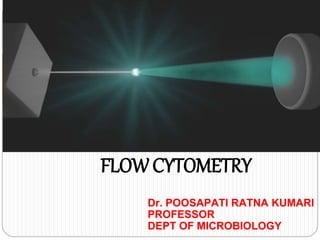This document provides an overview of flow cytometry, including its history, principles, components, applications, and quality control. Flow cytometry involves measuring physical and chemical properties of cells or particles as they pass through a fluid stream. Key developments included Moldavan's early work in 1934 and the coinage of the term "flow cytometry" in the mid-1970s. The three main systems of a flow cytometer are fluidics to transport particles, optics like lasers and detectors, and electronics to convert light signals to data. Applications include clinical uses like detection of bacteria and characterization of cells and particles across many fields.

















































